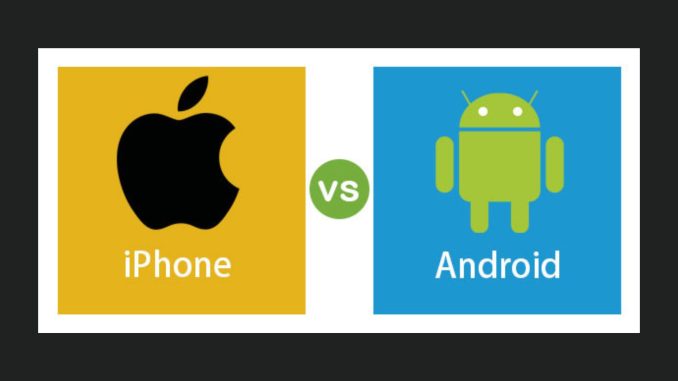
The rivalry between iPhone and Android has been one of the most enduring debates in the tech world. In 2025, both ecosystems have matured significantly, offering refined user experiences, powerful hardware, and a variety of features designed to meet the demands of modern users. But the question remains—which one is better in 2025? The answer, as always, depends on what matters most to you.
Let’s break down the key areas where iPhone and Android compete to help you decide which is the better choice this year.
1. Performance and Hardware
Apple’s iPhone 16 Pro series, released in late 2024, features the new A18 Bionic chip built on a 2nm architecture. It offers blazing-fast performance, improved efficiency, and superior machine learning capabilities. The integration of hardware and software continues to give iPhones an edge in long-term fluidity and reliability.
On the Android side, phones powered by Qualcomm’s Snapdragon 8 Gen 4 or Google’s Tensor G4 are no slouches. Devices like the Samsung Galaxy S25 and Google Pixel 9 deliver exceptional speed and multitasking. High refresh rate displays (up to 144Hz) and customizable hardware settings give Android a performance edge in gaming and power user scenarios.
Verdict: iPhone wins on efficiency and smooth performance; Android leads in raw hardware variety and customization.
2. Software and User Experience
iOS 18 in 2025 brings more personalization options than ever before, including interactive widgets, deeper AI integration (through Apple Intelligence), and improved cross-device features with macOS and iPadOS. The ecosystem is seamless, especially for users who already own other Apple products.
Android 15, meanwhile, remains the king of customization. From widgets and themes to default apps and deeper settings access, Android allows users to tailor their experience completely. Google’s AI assistant Gemini is also more conversational and integrated across apps than Siri, giving Android an edge in AI-powered assistance.
Verdict: iPhone for simplicity and ecosystem synergy; Android for flexibility and AI integration.
3. Camera and Photography
Apple has continued its tradition of stellar smartphone photography, with the iPhone 16 Pro Max boasting a periscope zoom lens, cinematic video, and ProRAW capabilities. Its computational photography delivers consistently excellent results in almost any condition.
On the Android side, devices like the Pixel 9 Pro and Galaxy S25 Ultra continue to push boundaries with superior zoom, low-light performance, and AI-powered editing tools like Magic Editor. Many Android phones offer manual camera controls and editing features that cater to photography enthusiasts.
Verdict: Android slightly ahead in camera versatility and AI tools; iPhone excels in reliability and video quality.
4. App Ecosystem and Updates
The App Store remains tightly curated, which results in higher-quality apps and better security. Apple also leads in software updates, with iPhones receiving OS updates for five to six years, often simultaneously across all devices.
While Google Play has improved its app security, the sheer openness of Android can lead to inconsistencies in app performance. Android updates also vary depending on manufacturer, though Google, Samsung, and OnePlus are now offering up to 7 years of software support for flagship devices.
Verdict: iPhone still leads in consistent updates and app quality, but Android is closing the gap fast.
5. Price and Value
iPhones remain premium products with premium price tags. While Apple has introduced more affordable models like the iPhone SE, the flagship models start at $999 and up. However, resale value remains strong, and many users hold onto iPhones for 4–5 years.
Android offers a broader price range. From powerful budget phones under $400 to foldables and flagships, there’s an Android phone for every budget. However, the resale value of Android phones tends to be lower, and some cheaper models may not receive long-term updates.
Verdict: Android wins in affordability and variety; iPhone offers better long-term value for premium users.
6. Security and Privacy
Apple has built a strong reputation around privacy, with on-device processing, app tracking transparency, and minimal data sharing. In 2025, Apple continues to promote privacy as a central feature across iOS, iCloud, and Safari.
Android has made major strides, especially with Google’s efforts to improve data encryption and app permissions. However, due to its open nature and third-party app stores, Android can still be more vulnerable to certain risks.
Verdict: iPhone leads in privacy and out-of-the-box security; Android offers more control, but with added responsibility.
Final Thoughts: Which Should You Choose?
There’s no one-size-fits-all answer to the iPhone vs. Android debate in 2025. Both platforms are powerful, innovative, and deeply capable of handling everything from communication to creation.
-
Choose iPhone if you value simplicity, long-term support, and tight ecosystem integration.
-
Choose Android if you prefer flexibility, a wide range of device options, and cutting-edge features at various price points.
Ultimately, the best phone is the one that fits your lifestyle, priorities, and budget. In 2025, whether you go iPhone or Android, you’re getting a top-tier device either way.